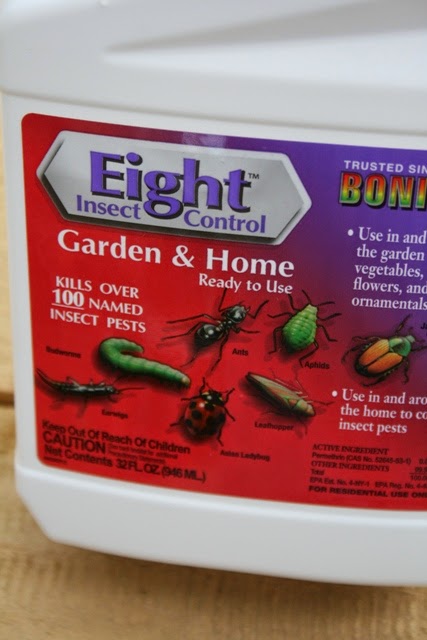I think I should rename my blog "Rainy Day Gardening" I can't seem to get out of the garden long enough to write unless it rains, something that has not happened much around here in the last month but I gratefully woke up to thunder and rain this morning.
If you read my post about Fool Proof Container Gardening you will know exactly what I am addressing here. If not, give it a read. I've learned much more about growing veggies in these little containers and have changed how I am going to do it next year.
First I wondered if it was really necessary to add all that shelving and drainage etc in the bottom. I am all about simplifying my life and saving time as well as money. If I could drill a few more holes in the side of the containers (about 3 inches up from the bottom) I figured I could put the PVC pipe in to add water to the bottom, fill that container with soil, add my fertilizer layer, finish the fill and plant. The drain holes would allow excess water to drain out but still leave water in the bottom for the soil to wick up. I tried it and Wala! This worked as well as the ones I spent hours building!
An extra plus for my new idea was no mosquitoes. I discovered that mosquitoes loved the standing water in the old containers and I needed to add mosquito dunks to the pots to kill the larvae. I just dropped them down the PVC pipe.
 I also ended up taking the plastic off the tops of all my containers. I think it was adding too much heat and causing my plants to wilt from that heat. Next year I'll skip that step also.
I also ended up taking the plastic off the tops of all my containers. I think it was adding too much heat and causing my plants to wilt from that heat. Next year I'll skip that step also. Another lesson learned: I assumed - never do that by the way :-) - anyway, I assumed that by having my plants up off the ground I would not have a problem with insects that have larvae in the soil. Wrong! I got squash borers in my lovely yellow squash plants just as they were beginning to bear fruit. I immediately slit the top of the stem where the damage was and removed those bad boys. I then buried that wounded portion of the vine so it could make new roots. this is not always successful because one never knows for sure if one has found all the borers, I was blessed because all my vines but one survived and are busy making little squash casseroles for me.
Another lesson learned: I assumed - never do that by the way :-) - anyway, I assumed that by having my plants up off the ground I would not have a problem with insects that have larvae in the soil. Wrong! I got squash borers in my lovely yellow squash plants just as they were beginning to bear fruit. I immediately slit the top of the stem where the damage was and removed those bad boys. I then buried that wounded portion of the vine so it could make new roots. this is not always successful because one never knows for sure if one has found all the borers, I was blessed because all my vines but one survived and are busy making little squash casseroles for me. To prevent borers in the cukes I just planted, I placed aluminum foil around the plants when they were about 3 inches tall. I read this confuses the moth and prevents it from laying the eggs that make the nasty things in the first place. The jury is still out on that one because they are not big enough yet to harbour the critters.
All things considered, I am very happy with my containers and will certainly add more next year. I did find that the ones I placed beside my house on the southwest side did much better than the ones that did not receive as much sun - pretty much a no brainer. I did have to move the containers away from the house a little 'cause my light colored siding was putting out lots of heat in the late afternoon - wilty plants!
Another little tidbit: I gave up trying to get rid of the mildew. the natural mildew treatment did work but mildew would come back somewhere else in a few days. I blame it on our terribly humid summers here in Middle Tennessee. It did not seem to hurt the fruit production just made the plants look bad.
About that fertilizer layer: I used 3 months timed release. I needed to fertilize the containers in early July because my 3 months were up. I just sprinkled it right on top of the soil. Everybody seems to be happy and productive now.
I'll be adding new containers for peas, winter squash and more salad greens soon. I have all sorts of containers in my yard. Look at how great the basil and peppers are doing in this pot.
Next year I'll start my tomatoes early in the greenhouse and grow everything on that southwest location or beside my deck where the suns shines until about 3 PM.
Happy Container Growing!
















 As you can see, we have lots of landscaping to do in this area. Tomorrow my son from Patterson Foundation Services (got to plug the kid's business) : ) and his helper are coming to fix my wet basement. I had to dig up all my flower beds in the front of the house. All plants are mulched in for the duration behind the privacy fence.
As you can see, we have lots of landscaping to do in this area. Tomorrow my son from Patterson Foundation Services (got to plug the kid's business) : ) and his helper are coming to fix my wet basement. I had to dig up all my flower beds in the front of the house. All plants are mulched in for the duration behind the privacy fence.  By this time next year, I should be to the point of maintain only! Yeah! Actually, I don't think gardeners ever get to that place; there is always a plant to move or a new variety that we must try. I'm going to post before and after picts - here's where we are today, tomorrow the bushes will be joining their friends behind the fence. I opted for the excavator to remove them -saved my back and probably the plants too.
By this time next year, I should be to the point of maintain only! Yeah! Actually, I don't think gardeners ever get to that place; there is always a plant to move or a new variety that we must try. I'm going to post before and after picts - here's where we are today, tomorrow the bushes will be joining their friends behind the fence. I opted for the excavator to remove them -saved my back and probably the plants too. 




























